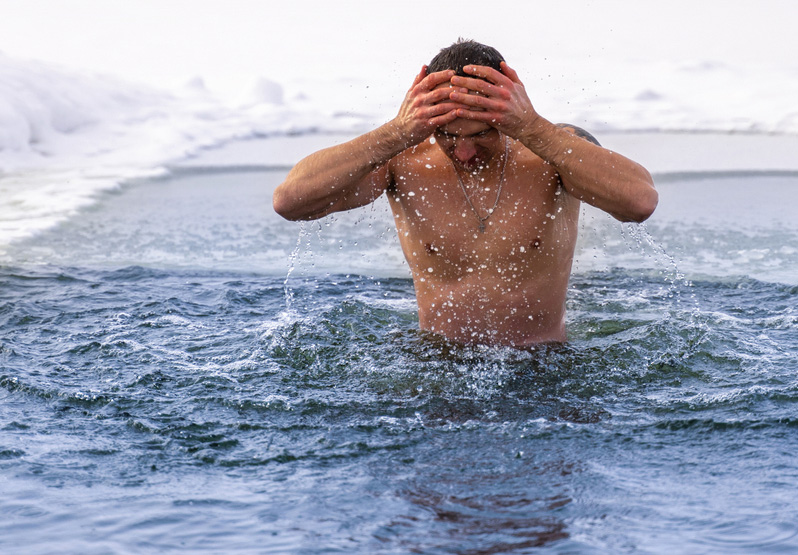The general idea of ice bath therapy is that cooling the body in water forces the body to work actively to maintain the internal temperature. It increases blood flow throughout the body. Here are some scientifically researched benefits of ice bathing.
Faster recovery after exercises and injuries
For athletes, cold therapy can help them recover from the pain caused by exercise. The idea is that the cold reduces swelling and lactic acid, which causes muscle soreness after a workout. According to a 2010 study, it works by narrowing blood vessels. One sports medicine study found that immersion in an ice bath after a strenuous run helps to increase tissue oxygen, which helps to rebuild muscles. Cold therapy also helps reduce the pain caused by the injury. A 2014 meta-analysis showed that cold therapy can reduce pain even after the body has warmed up. Conclusion - cold therapy is suitable for reducing muscle pain after sports.
Strengthening the immune system
As people get more sick in the winter, it's hard to believe at first that the cold can boost the immune system. A clinical trial in the Netherlands found that people taking a cold shower were less likely to be 29% absent from work. But fighting colds is not the only way cold bath therapy can help the immune system. Exposure to the cold increases the amount of white blood cells in the body, which protects against disease. Ice baths can affect cancer cells. Daily short-term cold stress (for example, from a cold shower or bath) has been shown to increase the number and activity of cytotoxic T-cells and NK cells. These cells are key players in preventing and attacking tumor cells. Sudden immersion in ice-cold water also increases the permeability of blood vessels in the brain, which can help protect against some diseases.
Improves brain function and mood
Cold therapy helps to focus. This is due to the catecholamine released during a cold bath. Exposure to cold activates vegetative (sympathetic) nervous system (Sympathetic nervous system activates, speeds up the heart rate, tightens and strengthens the muscles, dilates the pupils, speeds up metabolic processes, reduces the secretion of digestive juices, dilates the airways or bronchi.) and increases endorphins (In addition to these adrenaline endorphins reduce pain in strained muscles, increase the response and the body adapts to intense exercise faster. It also increases the release of norepinephrine in the brain, which prepares the body for action and blood focus. Cold therapy improves mood. It has been observed that cold sends electrical impulses to the brain, leading to antidepressant therapy. In fact, it is thought that cold therapy may have antipsychotic effects for the same reason. In cold therapy, electrical impulses can also "displace" psychotic neurotransmissions.
Increases energy, metabolism and weight loss
When immersed in cold water, the low temperature shock causes a feeling of energy overload (a bit of dizziness). It happens catecholamine (adrenaline and noradrenaline) and endorphins in the body in response to a cold. It's basically a huge influx of adrenaline. Researchers found that immersion in 14 C-degree cold water increases the rate of catecholamine growth by 530 percent! Ice baths upgrade metabolism and speeds up weight loss. A study of human metabolism found that exposure to cold helps white fats to act like brown fats. Brown fat is the "good fat" that helps the body to produce heat (newborns have a lot of brown fat). This means that cold bath therapy helps to burn white fat.
Closing thoughts on ice baths and cold therapy
Walking in cold water may require a big reception, but the benefits and feelings of an ice bath afterwards are worth it. An improved immune system, better mental clarity and health, and improved metabolism are quite tempting benefits and why it is worth pursuing.
More about tempering, ice and cold baths
Cold water shower, hardening benefits
The benefits of a cold bath are why you need to do it
Motivational technique for a cold winter swim

